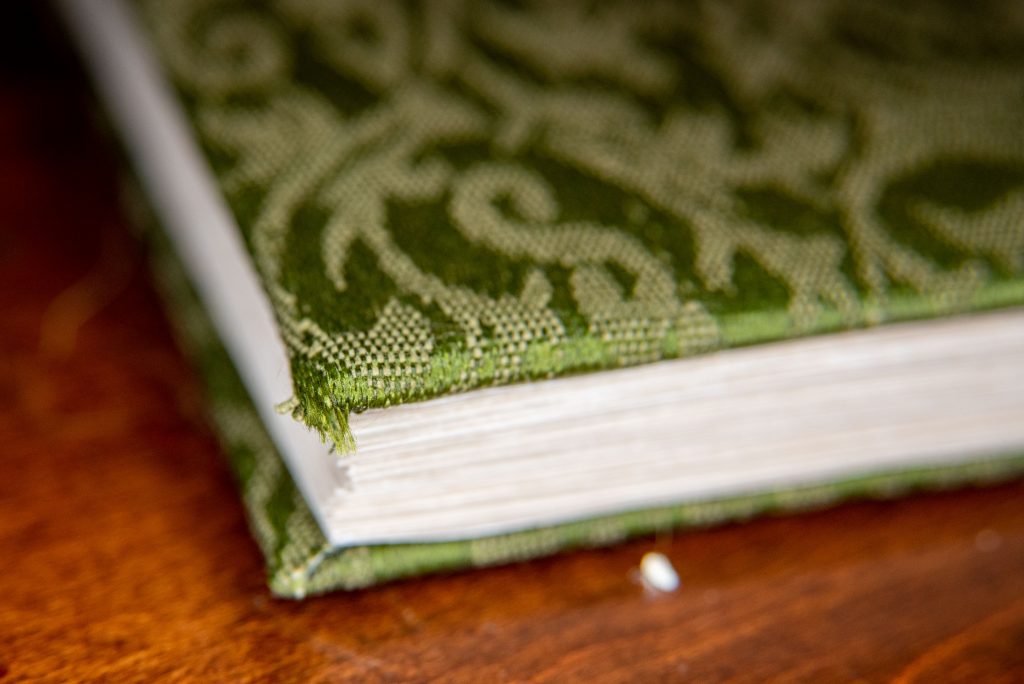I Have Delved in to Bookbinding
My newest crafting obsession is with bookbinding. I made all that paper and wanted to create something more interesting than a stack with it.

However, that ran in to problems very quickly because my handmade paper is 1.) small; and 2.) thick. It also is handmade, so there is no grain direction to speak of. Folding it in half generally leads to it breaking along the fold. But that’s just because I need to get better at papermaking.
Paper
Until then, I have some paper of my own to practice with. I even purchased a big stack of 11×17 linen paper to play around with. The most important thing, in my mind, is that it is fountain pen friendly.
My first book was made using some aged-looking paper I purchased with the intent of using it for letter writing. Surprisingly–downright shockingly–it is short grain paper! Cheap, short grain, and fountain pen friendly. What more could I ask for?
The other papers I purchased to try are 8.5×11 long grain Neenah Classic Crest in Baronial Ivory (so far my favourite), and 11×17 Mohawk Linen.
Cover

For the cover, I have been using nori paste to glue old fabric strips to thin mulberry paper, which can then be glued to the book boards.
Boards
So far, the most confusing aspect for me is the concept of book boards. Generally because they come in all sorts of different thicknesses and I have no idea what I need or want and haven’t found the best way to go about sampling them.
However, I order stamps a lot and have a huge supply of cardboard from those orders. Since my first attempt was sewn board binding, it’s worked out pretty well.
Big Machinery
I spent about a week obsessively drawing up a plan for building my own nipping press and trying to find the best way to build one, and it kept getting more and more complicated. I still haven’t built or bought one and have been using my heavy coin collection to press my signatures.
Seems a finishing press is much more useful, however, because trying to glue the spine at this ridiculous angle led to a lot of my issues with the finished product. I think I can build one of those much easier. Perhaps with supplies I already have in my workshop.
As for a sewing cradle, it didn’t seem awfully necessary to me, but maybe if I improve I’ll find they’re important.
Little Tools
This whole thing started almost a year ago when I was nib shopping on an arts website and saw they also sold awls. I bought one because I thought it would be fun to make books one day. I thought it was all I’d really need to buy since I already had thread and needles and paper.
The other thing I needed was glue, though, and I got PVA glue because that is what DAS Bookbinding uses, and he is my book hero.
The mulberry paper comes in handy for the spine, though, so I haven’t bought booktape. But I think I will need to eventually for more interesting and different binding methods.
Next, I need to figure out how to veganise the sex appeal of a leather-bound decorated manuscript.
My First Completed Journal

What I like:
- The cover material is beautiful!
- The line template I created came out perfect and it lines up on every page.
- It has a good number of pages.
- My haphazard choice for the decorative endpaper isn’t so bad.
What I need to improve:
- Gluing! I did a terrible job with gluing. I cut the cover fabric too short at the corners and it couldn’t properly fold over; the end papers are crooked; and some of the signatures are glued together too much, which others aren’t at all. I did a terrible job there. A finishing press will solve at least ones of these problems.
- The fabric was probably thick enough that I didn’t need the mulberry paper; and it turns out I didn’t glue it perfectly on to the paper anyway because there are bubbles where the fabric isn’t connected to anything at all.
- I have no nice way to make the fore end of the pages look nice and even. I cut the individual signatures but it’s difficult to evenly measure such small cuts, and one signature got caught in the blade and has a jagged end which drives me crazy.
- I need to do something about the head and tail at the spine. The fabric is just loose there and I’m sure will fray. It’s also really thin, obviously because of the way I chose to to bind it.










